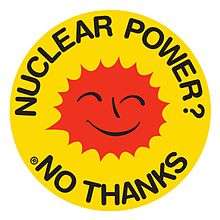Avon Hudson

Avon Hudson (born 1939) is a South Australian RAAF ex-serviceman, nuclear weapons testing whistle-blower and co-author of the 2005 book Beyond Belief which he wrote with academic and historian, Roger Cross.[1]
Hudson was assigned to work at the Maralinga testing range during the period of minor trials which included the explosive scattering of plutonium. At risk of incarceration for exposing Commonwealth secrets, Hudson disclosed undertakings of the British nuclear weapons testing period in South Australia (1956-1963) making multiple appearances in mainstream media from the 1970s[2] through 2010s.[3][4] His disclosures delayed the return of the testing range to their traditional custodians, the Anangu people due to the inadequacy of clean-up measures, persistent contamination and associated health risks of ionizing radiation. He gave testimony to the Royal Commission into British nuclear testing in Australia in 1984 and 1985 and has continued to work as a spokesperson for nuclear veterans in South Australia since that time. Avon is an anti-nuclear activist and educator committed to explaining radiological hazards in accessible English- knowledge he has acquired over many decades of private study. After six years with the RAAF, Hudson left the armed services and instead worked on the civil space program in Australia. Avon Hudson has also served as an elected member of the Wakefield Regional Council for many years.[5] During his time as a councilor, Hudson formally established the region, which includes his hometown of Balaklava, as a "nuclear free zone".
Portrait of a Whistleblower exhibition 2015
Avon Hudson's life is the subject of a public exhibition which opened on February 13, 2015, as part of the Adelaide Fringe Festival in Balaklava, South Australia. The exhibition Portrait of a Whistle-blower presents artifacts and images which trace his journey from childhood through his RAAF service and his subsequent life as a nuclear whistle-blower. The exhibition is curated by photo-media artist Jessie Boylan, who also contributed images to the exhibition including reproductions of artifacts and portraiture of Hudson. The artifacts on display include photographs from Hudson's own collection, a piece of vitrified earth from Maralinga, a red umbrella Hudson once used to evade an undercover government agent who was following him, and two cathode-ray tube televisions displaying TV news broadcasts and documentary film footage.
The exhibition was launched as part of an expanded event called 10 Minutes to Midnight, presented by Alphaville and Nuclear Futures. The event combined history, art and discussion and was supported by the Australia Council for the Arts and Arts SA.[6] It featured three stages, including a projected video installation which created an impression of the nuclear test program and its effects and an open discussion with Boylan and Hudson. The event attracted a public audience which included nuclear veterans and their relatives who were able to share their experiences and ask questions. Additional contributing artists included Teresa Crea, Linda Dement, John Romeril, Nic Mollison and Luke Harrald.
See also
References
- ↑ Cross, Roger; Hudson, Avon (2005). Beyond Belief - The British bomb tests: Australia's veterans speak out. Kent Town, South Australia: Wakefield Press. ISBN 1862546606.
- ↑ "Killen must explain Maralinga: Scholes". The Canberra Times. 1978-10-08. Retrieved 2015-02-14.
- ↑ Haxton, Nance (2009-12-19). "British nuclear test veterans still seeking compensation". AM. ABC. Retrieved 2015-02-14.
- ↑ Bartlett, Liam (2011-04-22). "Nuclear time bomb". 60 Minutes. 9. Retrieved 2015-02-14.
- ↑ Redpath, Lisa (2009-04-30). "Central ward councillor Avon Hudson says there are …"Too many councillors"". Plains Producer. Archived from the original on 2015-02-14. Retrieved 2015-02-14.
- ↑ "10 Minutes to Midnight". Nuclear Futures. Retrieved 2015-02-14.
